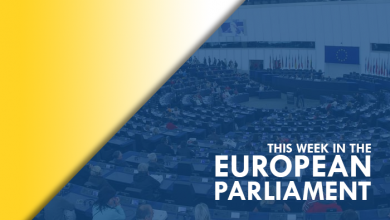Unanimity and QMV: How Does the Council of the EU Actually Vote?

The Council of the EU (also known as Council of Ministers) is a much-misunderstood EU institution. Both in Eurosceptic and in pro-EU circles, the misinterpretations over its role and operation are plentiful. On one hand, there is a natural confusion arising from the sheer amount of similarly named supranational organs. Navigating between the Council of the EU, the European Council, and the Council of Europe can cause mystification and lead citizens to use the terms interchangeably.
On the other hand, there is a larger issue concerning misconception as to its decision-making process and voting system. Too often, the Council is criticised for making decisions based solely on unanimity. This, according to its critics, makes it extremely hard to pass laws without at least one country blocking procedures. However, this is not quite how it works. The Council only uses unanimity voting for a very restricted number of topics, preferring a variety of majoritarian systems in the other cases. Let’s make some clarity on this matter.
What is the Council of the EU?
The Council is one of the two legislative organs of the European Union, together with the Parliament. In most cases, it decides together with the Parliament through the ordinary legislative procedure, also known as co-decision. This procedure is used for those policy areas where the EU has exclusive or shared competences with member states. Occasionally, in a number of very specific areas, it will use special legislative procedures where the role of the Parliament is limited.
This institution is made up of Government Ministers from each EU Member State, who meet to discuss, amend, adopt laws, and coordinate policies. Although it is a single legal entity, it meets in ten different configurations based on the topic being discussed. For example, if the Council is meeting to discuss agriculture and fisheries, all the ministerial representatives for agriculture will meet up in Brussels. This ensures that the governments of member states are actively involved in the European legislative process, providing their input directly.
How does the Council vote?
Unlike some believe, unanimity is not the primary voting method in this chamber. In fact, unanimity is used only in very limited circumstances, exactly because of the inherent difficulties in gaining a complete consensus amongst 28 very different states. Depending on the issue being discussed, it can vote according to a simple majority, qualified working majority, or unanimous consent.
Simple Majority
If the Council is deciding on procedural matters, for example evaluating the adoption of its own rules of procedure, all it will need to pass a decision is the favourable vote of 15 out of its 28 ministerial members.
Equally, a simple majority is also all that is needed in order to pass requests to the Commission to submit legislative proposals or undertake studies on any matter. Because the Council (like the Parliament) has no power to submit legislation, the treaties are quite lax on the voting majority necessary to present suggestions as to possible future laws. This allows it to have a larger margin of appreciation when it comes to presenting proposals to the Commission, allowing most ideas to be submitted – even when not everyone is in agreement.
Qualified Majority Voting
Most of the decisions, though, happen through a quite complex system known as Qualified Voting Majority (QMV), or double majority. This is the method used during all ordinary legislative procedure decisions. About 80% of all the decisions taken by the Council are adopted through QMV. The general rule is that two conditions must be met in order to pass legislation: 55% of all member states must vote in favour (16 out of 28), and those states that vote in favour must represent at least 65% of the total EU population. To prevent less populous states from ganging up on larger ones, the blocking minority must be composed of at least four countries representing 35% of the overall population in order to block a decision.
When not all the Ministers are participating in a vote, for example because their country has an opt-out on a certain policy area, this requires a majority of 55% of the participating states representing 65% of the participating EU population. Under this system, abstentions count as votes against.
However, it is important to point out that this system is only valid for votes based on proposals by the Commission or by the High Representative of the Union for Foreign Affairs and Security Policy. When the Council is voting on proposals that do not come from either of these, the threshold is higher. In particular, it requires that at least 72% of the Ministers vote in favour, representing at least 65% of the total EU population.

Unanimity
In the case of decisions on especially sensitive topics, the Treaties require the Council to pass legislation unanimously. For example, this includes common foreign and security policy, EU membership, EU finances, taxes, social security and protection of workers, and certain decisions in the area of criminal judicial cooperation and policing. Unanimity is also required in order to impose sanctions on another member state for violation of a constitutional principles, as per Article 7 TEU. In these cases, abstention does not constitute a vote against, and as such does not prevent a decision from passing.
Another case in which unanimity is required is when the Council wants to pass amendments which have been rejected by the Commission. The Commission has the power not to adopt all of the Parliament’s amendments. When this happens, the Council may unanimously vote in favour of maintaining them. In this case, the amendments are kept and the whole legislation is adopted without further discussion.
Is Reform Needed?
Even though the Council doesn’t operate exclusively (or indeed even primarily) though unanimous consensus, this doesn’t mean that the system is perfect or that it doesn’t deserve criticism. Indeed, it is and remains the one EU institutional organ where critique is the most justified. Over-powerful national governments, paired with continuous bickering and inability to put aside national interests for the common good, make it frustratingly hard to progress forward on the path of harmonisation and federalisation. Even where unanimity isn’t needed, the current system is just one crisis away from toppling over completely.
For example, there are several drawbacks to QMV. At present, population size does not automatically translate into weight percentage of a country. The weight of smaller country is adjusted so as to make them relatively over-represented in voting, ensuring that larger countries can’t dominate. But with the possibility of future enlargement towards the Western Balkans, the balance between countries will change. With percentages split amongst so many countries, gaining a sufficient majority will become harder. Consensus will thus become harder to reach, meaning that it is probable that this system will have to change soon or risk becoming unworkable.





